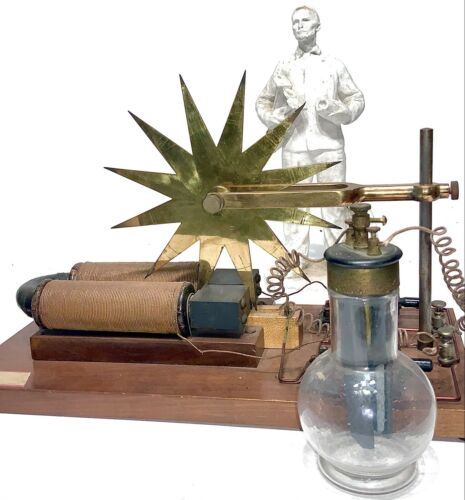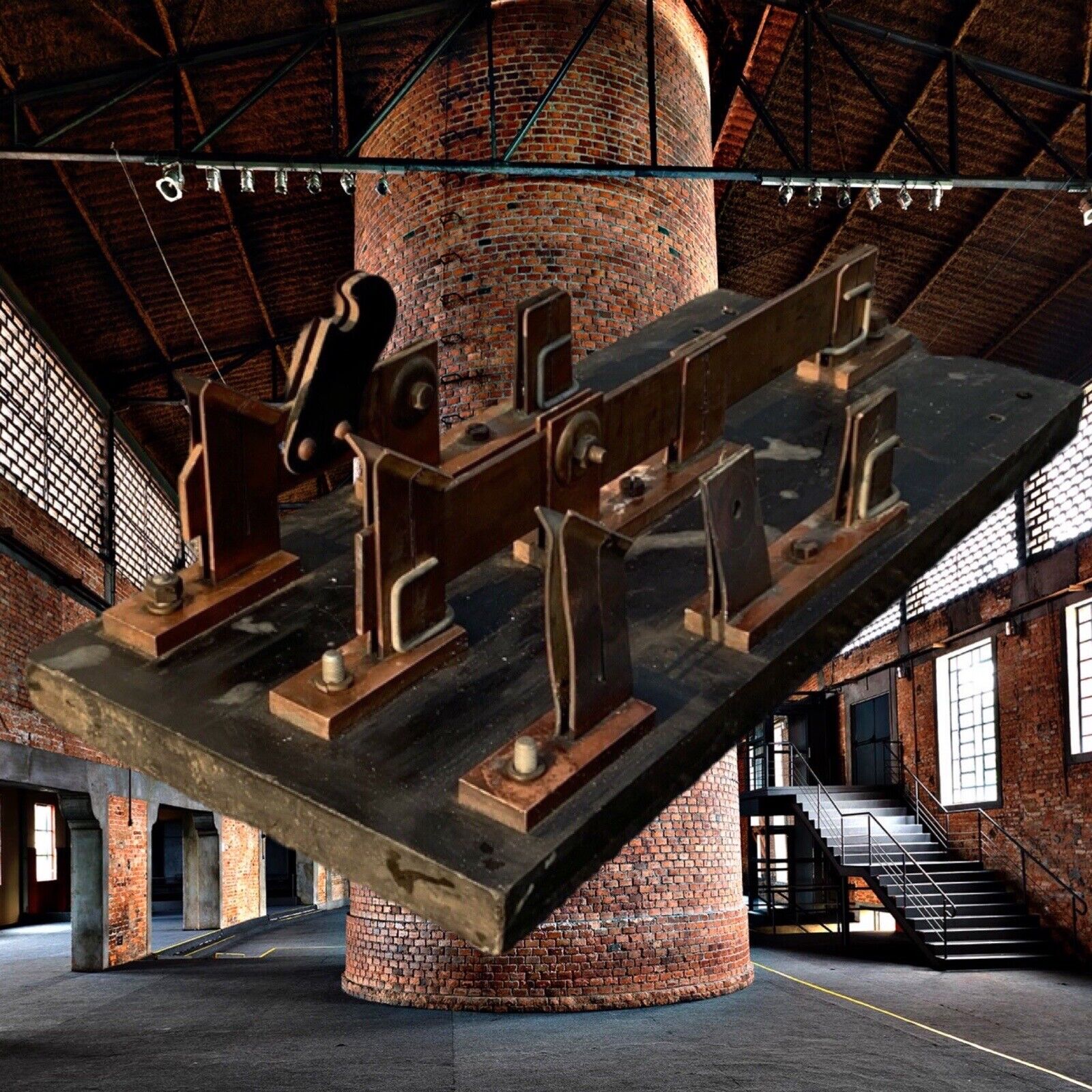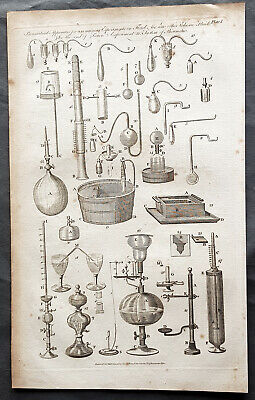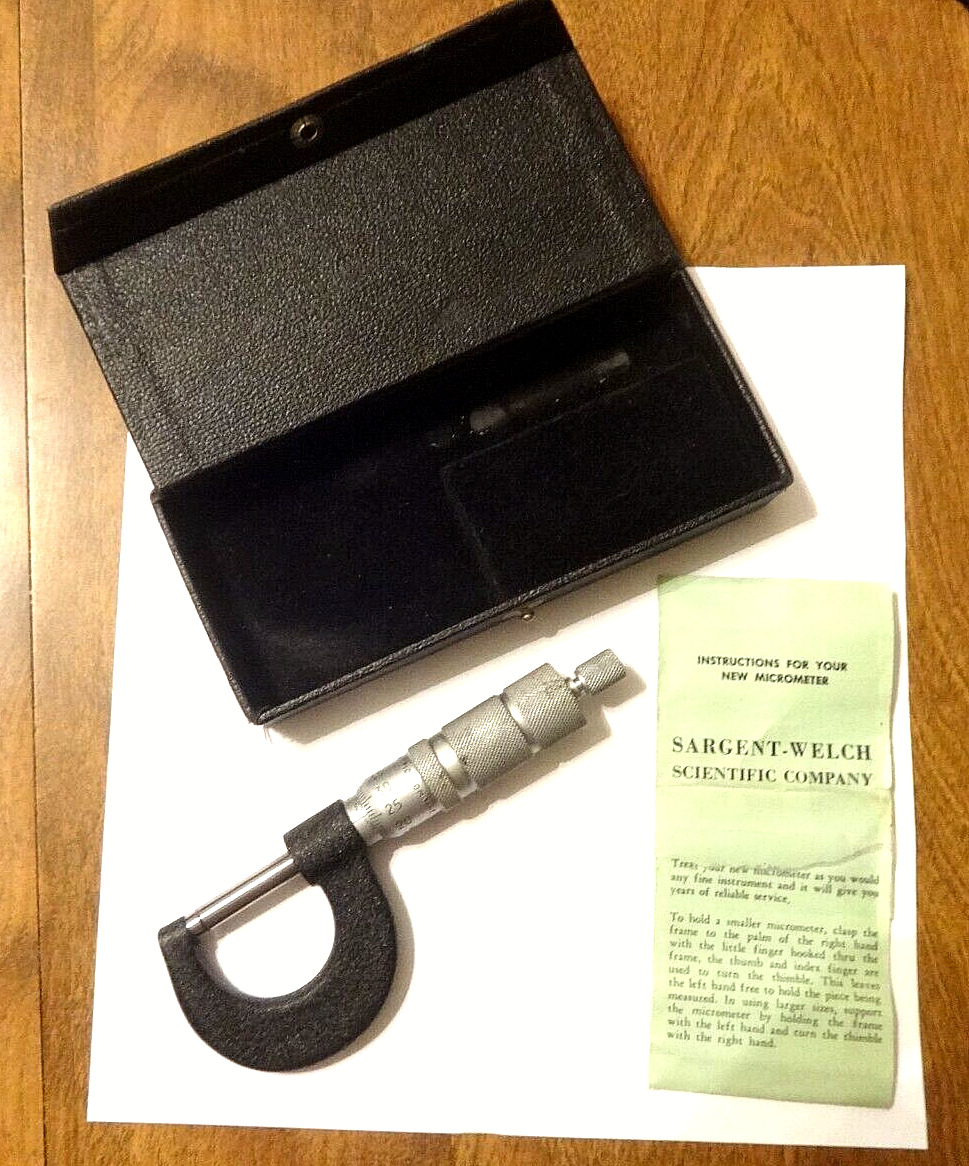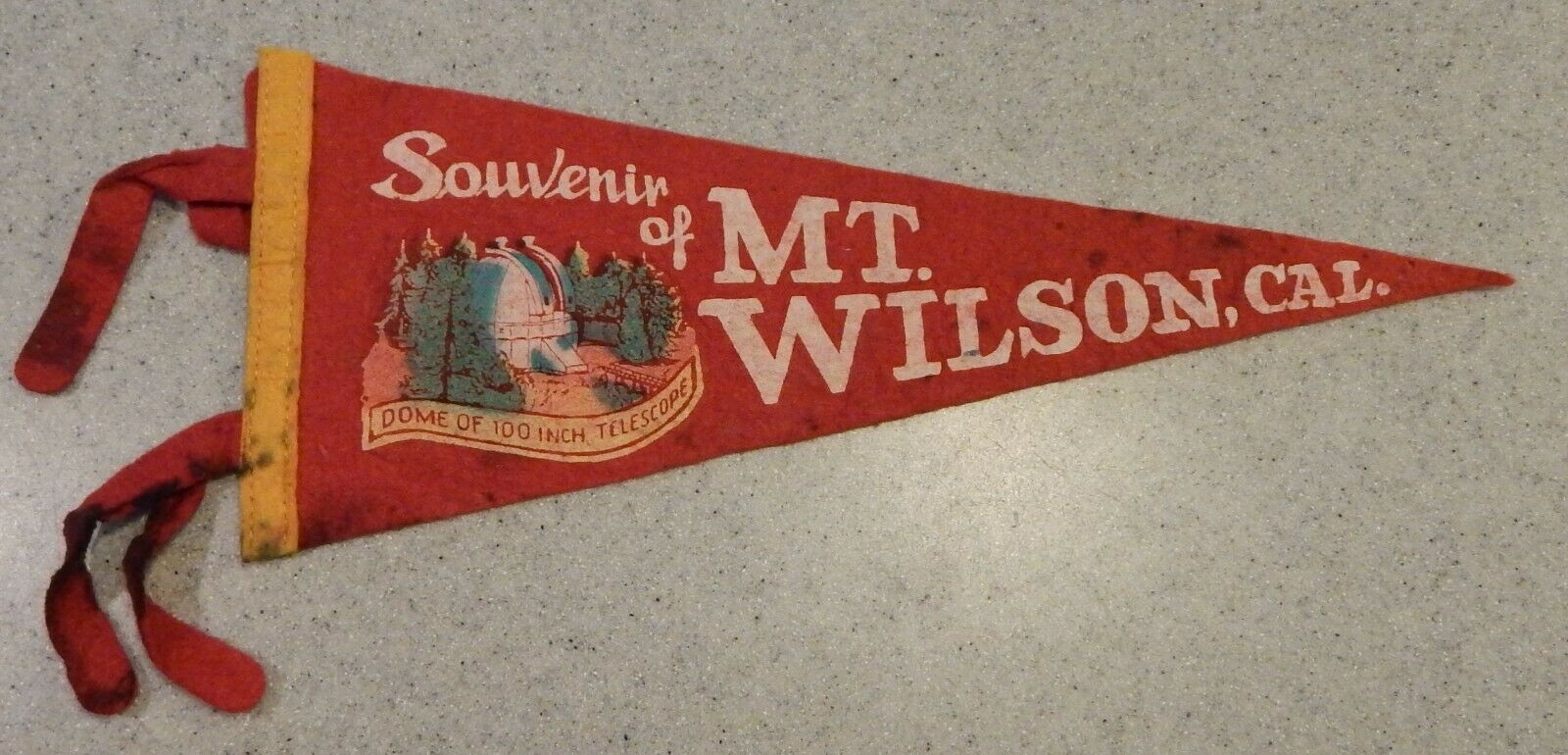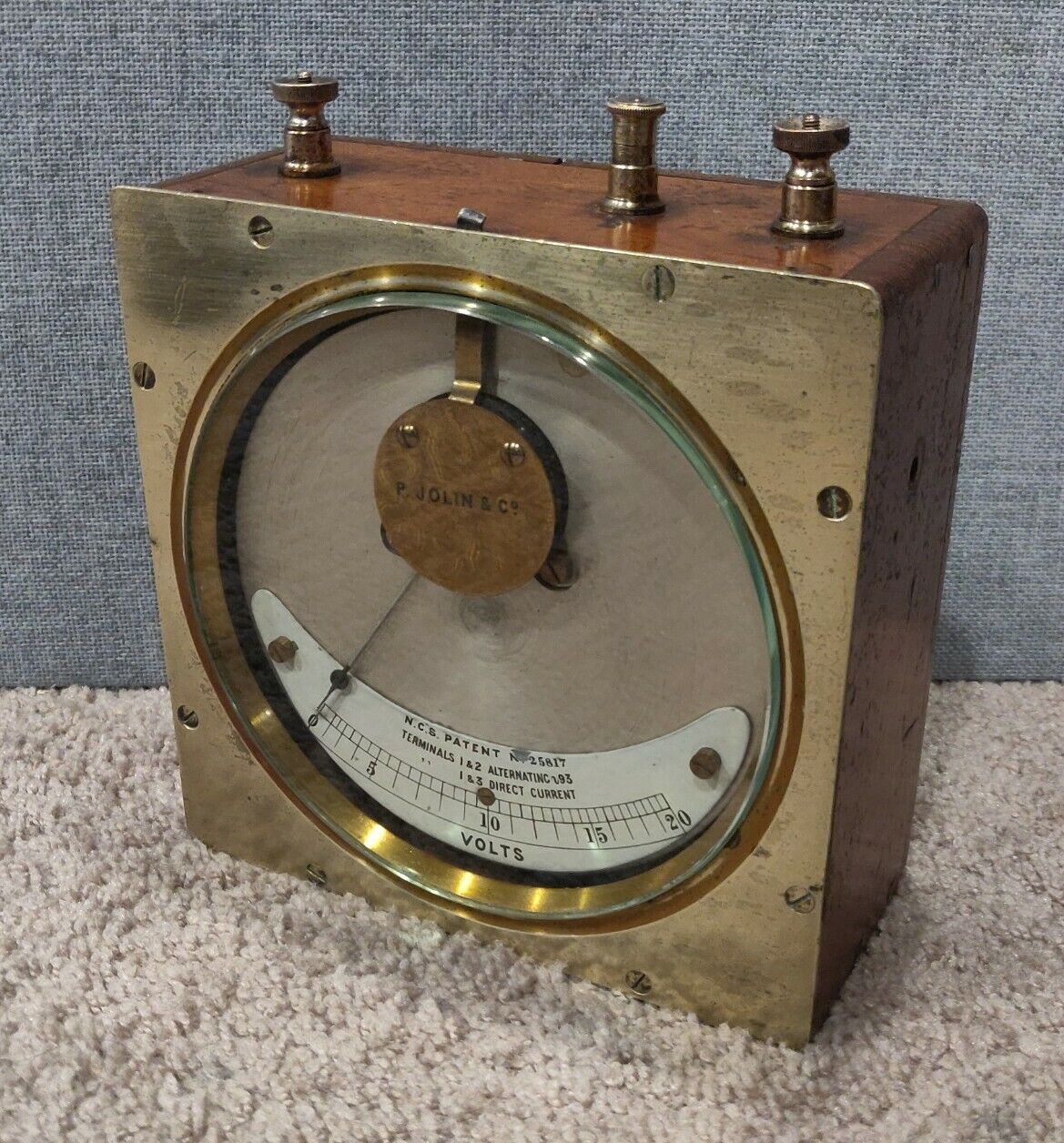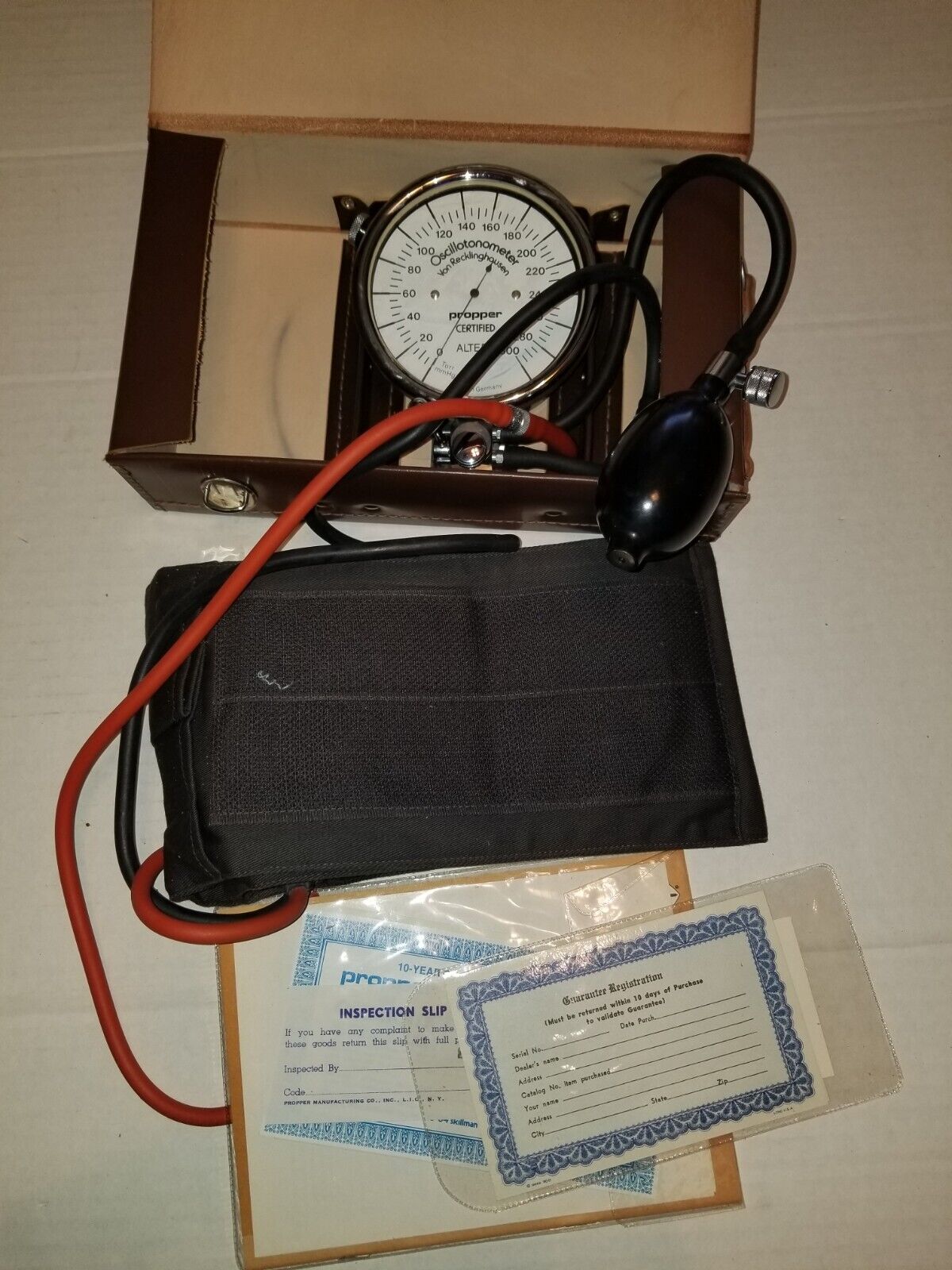-40%
CA 1880 BARLOW'S WHEEL MERCURY DIP ELECTRIC MOTOR WITH GRENET CELL BATTERY
$ 660
- Description
- Size Guide
Description
DESCRIPTIONAcquired from historic Smith College Physics Laboratory Study collection. Removed from over 100 years in storage. This example is one of the first homopole electric motors in the design of Barlow’s 1822 invention.Barlow’s Wheel Historical Information:
The Barlow Wheel (aka Faraday wheel and aka mercury dip motor) was first invented in 1822 by the English mathematician and physicist Peter Barlow (1776-1862). Barlow introduced his mercury dip star wheel motor one year after Faraday unveiled his landmark electric motor. Mercury is poured into the trough located on the base of the apparatus. The wheel is lowered until a spoke just dips into the mercury. Voltage applied to the binding posts will cause rotation of the wheel. In 1820 Hans Christian Ørsted announced his discovery that the flow of an electric current through a wire produced a magnetic field around the wire. André-Marie Ampère followed on and showed that the magnetic force apparently was a circular one, producing in effect a cylinder of magnetism around the wire. No such circular force had ever before been observed. Self-taught British scientist Michael Faraday (1791 – 1867) was the first to understand what these discoveries implied. If a magnetic pole could be isolated, it ought to move constantly in a circle around a current-carrying wire. In 1821 Faraday set about trying to understand the work of Ørsted and Ampère, devising his own experiment using a small mercury bath. Faraday’s which transformed electrical energy into mechanical energy, was the first electric motor.This discovery led Faraday to contemplate the nature of electricity. Unlike his contemporaries, he was not convinced that electricity was a material fluid that flowed through wires like water through a pipe. Instead, he thought of it as a vibration or force that was somehow transmitted as the result of tensions created in the conductor. Named after Dutch physicist Hendrik Antoon Lorentz, The “Lorentz” force law of electromagnetic theory has a complicated and unclear history; muddled versions of it were in circulation for most of the Nineteenth Century. One of these — accurate so far as it goes — stated that a current-bearing wire placed between the poles of a horse-shoe magnet experiences a force that is perpendicular to both the currrent-direction and the line joining the magnetic poles. This law was known by the 1820s and was the basis of one of the first electric motors: “Barlow’s wheel”. In this device, wires join one end of a battery to a pool of liquid mercury and the other to the axle of a metal wheel. When the wheel is lowered into the quicksilver, current flows through the circuit. If a horse-shoe magnet be then placed with its poles on opposite sides of the wheel-mercury contact, the force law predicts that the wheel will experience a tangential acceleration and rotate. Note: a non-toxic conducting replacement for mercury (Galinstan or other Electrolytic substance) is recommended for modern day demonstration. The early 19th Century philosophical “engines” and related electro-mechanical devices of Benjamin Franklin, Orstead, Faraday, Barlow, Ampere, Arago, Jedlik and other landmark pioneers of electricity provided the foundation for the work of Davenport, Edison, Tesla and others who highlighted the evolution of the electric motor, dynamos and other electrical age inventions paving the way to what is often taken for granted today.
Description of item
: Fine details: a 7” long horseshoe electromagnet with twin coils exhibiting original wires in excellent condition mounted above a 6” long wood trough providing a mercury reservoir. The all brass 8” diameter star wheel with (12) points supported on an adjustable axel with knurled adjustment and stop screws (Note: provided to center wheel points within trough while serving as adjustable bearings). The horizontal axel supported by an all brass, finely turned and finished wishbone support with variable knurled thumb screw height adjustment in a vertical 7” x 3/8” brass column (Note: this allows for adjustment of star point depth into mercury reservoir), each star point with approx. 1/2” discoloration from mercury.
Other fine details include twin brass terminals each with knurled clamp screw, twin 3 3/4” long knife switches (Note: it is believed that switches were added for experimental purposes ca. 1895. It is believed this example of Barlow’s Wheel was built ca. 1875-1880) Note: see photo of other Edison Era Barlow’s Wheel Motors from prominent museums. Photo credits: MIT, Boston, Science Museum, London, Sparks Collection***********************
Final details include a 16” x 8” walnut base with (4) 3/4” diameter original base pad supports.
See partial laboratory paper label on base “2 cells, 3 volts”, additional text not interpreted. Please let us know if you can decipher.
Dimensions: Total weight: 12lbs. Overall height to vertical star point as pictured 11”, length of axel fork 8”. This historic electrical artifact is being offered with an original Edison era Grenet cell battery {see photos} .The battery with 3 1/2” diameter glass reservoir with twin 4” long graphite plates suspended parallel with an algamated zinc plate between them supported by a brass sliding rod which allows the zinc to be drawn entirely out of the electrolyte. The electrolyte consisted of water, potassium, dichromate and sulphuric acid. The E.M.F of the cell is between 1.92 to 2.20 volts. The cell appears to be original with exception of a newer zinc element shaft brass stop screw. Cell dimensions: overall height to top of electrode fully inserted 7”, glass cell base 2 1/2”, weight 1 1/2 lbs.
Note: we have provided wire from cell to terminals. We have not and will not attempt to run the motor. Coils have been tested for continuity and we see no reason the motor would not run for demonstration purposes.
********************
This early Edison era example of Barlow’s philosophical engine or electric motor would complement any museum, personal or corporate collection.Please contact us for further information.
Satisfaction is always a must.
WE SHIP GLOBALLY
Techantiques is excited to announce that it has acquired numerous estate collections and select consignments of steam engines, scientific, mechanical, Industrial Age, and other similar delectable items. We have an incredible selection of steam models and full size , stationary, marine engines, a prominent university physics lab collection of philosophical, scientific and demonstration artifacts from 1830-1900.
Techantiques currently has 2,700 positive feedback ratings since its inception in 1997. Please review our feedback for excellent representation, presentation, customer satisfaction, and above all, communication. We are known for quality preparation, packaging, shipping, and our customer satisfaction guarantee policy. Satisfaction is a must...
Techantiques will ship globally anywhere in the free world. For shipping inquiries, contact us through eBay.
Techantiques buys complete collections, individual items, or will accept select items on a consignment basis.
Note: We will sell your consignment(s) without the need to ship to us. Inquire for further information.
We are most interested in purchasing one or whole collections of large and small full size, model, toy steam engines and or related items.
Selling in as is Used condition a large antique electrical copper knife fuse panel box for steampunk art only. It does have a hinged door with a beveled glass in the front. Front box cover with a hinged door can be removed "see pics". This electrical panel box is very heavy. Front cover is 38 3/4" tall, 24 1/4" wide and with the front cover the panel box is about 6" deep. Door is 15 1/2" wide and 30 1/2" tall. Please look at all pics for condition. This panel box is very old and heavy and is not in new or perfect condition. For more info please send a PM. White light streak you see in cover pic is a just a glare in the door glass coming from ceiling light. " Local Pick Up Only " No Refunds or Returns Sold As Is "
